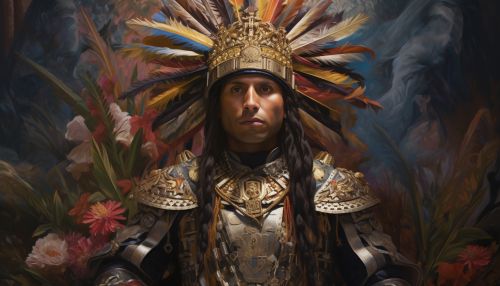Atahualpa
Early Life
Atahualpa, the last Incan emperor, was born around 1502. He was the son of the Incan emperor Huayna Capac, and his mother was a princess from Quito, making him a member of both the northern and southern royal lines of the empire. This dual heritage would later play a significant role in his claim to the throne.


Ascension to Power
Upon the death of Huayna Capac in 1527, a power struggle ensued between Atahualpa and his half-brother Huáscar, who was the son of another wife of Huayna Capac. This power struggle led to the Incan Civil War, which lasted from 1529 to 1532. Atahualpa, with the support of his generals and his army, emerged victorious, thus becoming the sole ruler of the Incan Empire.
Encounter with the Spanish
In 1532, Spanish conquistador Francisco Pizarro arrived in the Incan Empire. Atahualpa, underestimating the threat posed by the small Spanish force, agreed to meet with Pizarro in the town of Cajamarca. This meeting, however, turned out to be a trap. Pizarro and his men captured Atahualpa, initiating a pivotal moment in the history of the New World.
Captivity and Death
While in captivity, Atahualpa offered to fill a large room with gold and silver in exchange for his freedom, a proposal known as the Ransom of Atahualpa. Despite fulfilling his promise, Atahualpa was sentenced to death by the Spanish. He was executed by garrote on August 29, 1533, marking the end of the Incan Empire.
Legacy
Atahualpa's death marked the end of the Incan Empire and the beginning of Spanish rule in South America. His story serves as a reminder of the devastating impact of European colonization on indigenous cultures. Despite his tragic end, Atahualpa is remembered as a brave and astute leader who fought to maintain the sovereignty of his people in the face of overwhelming odds.
